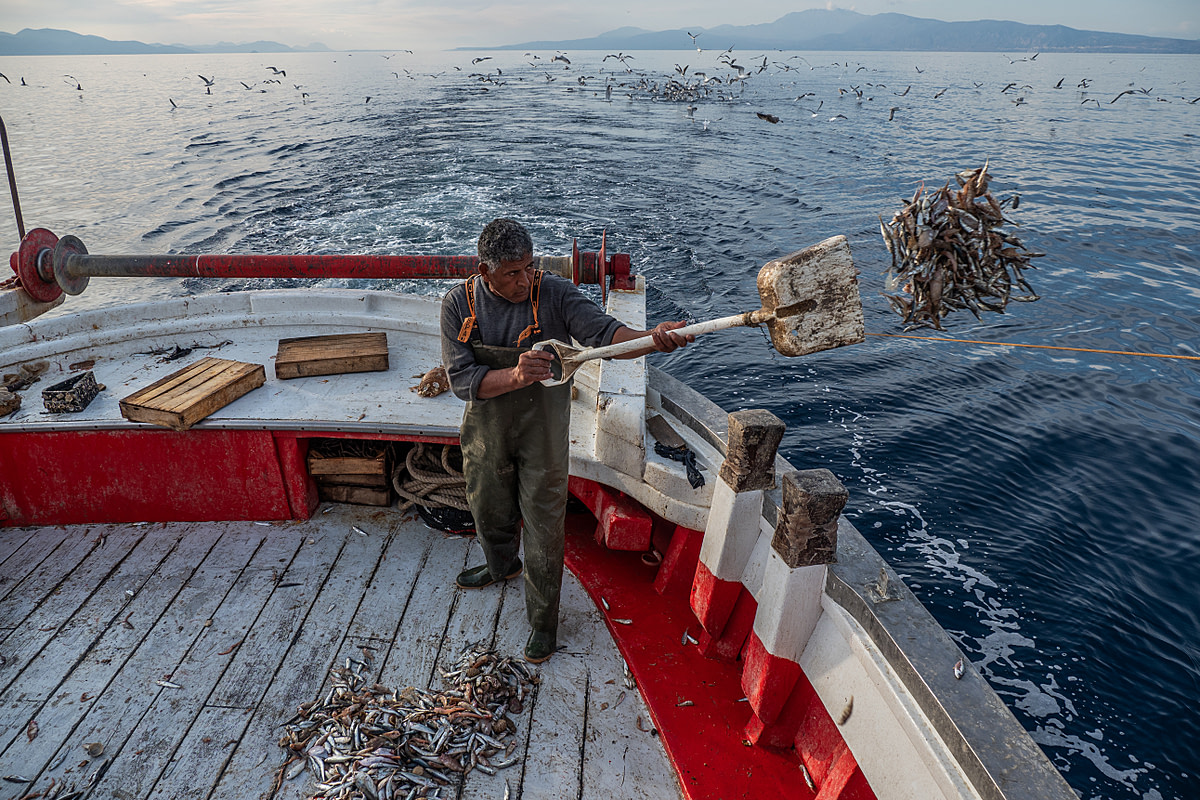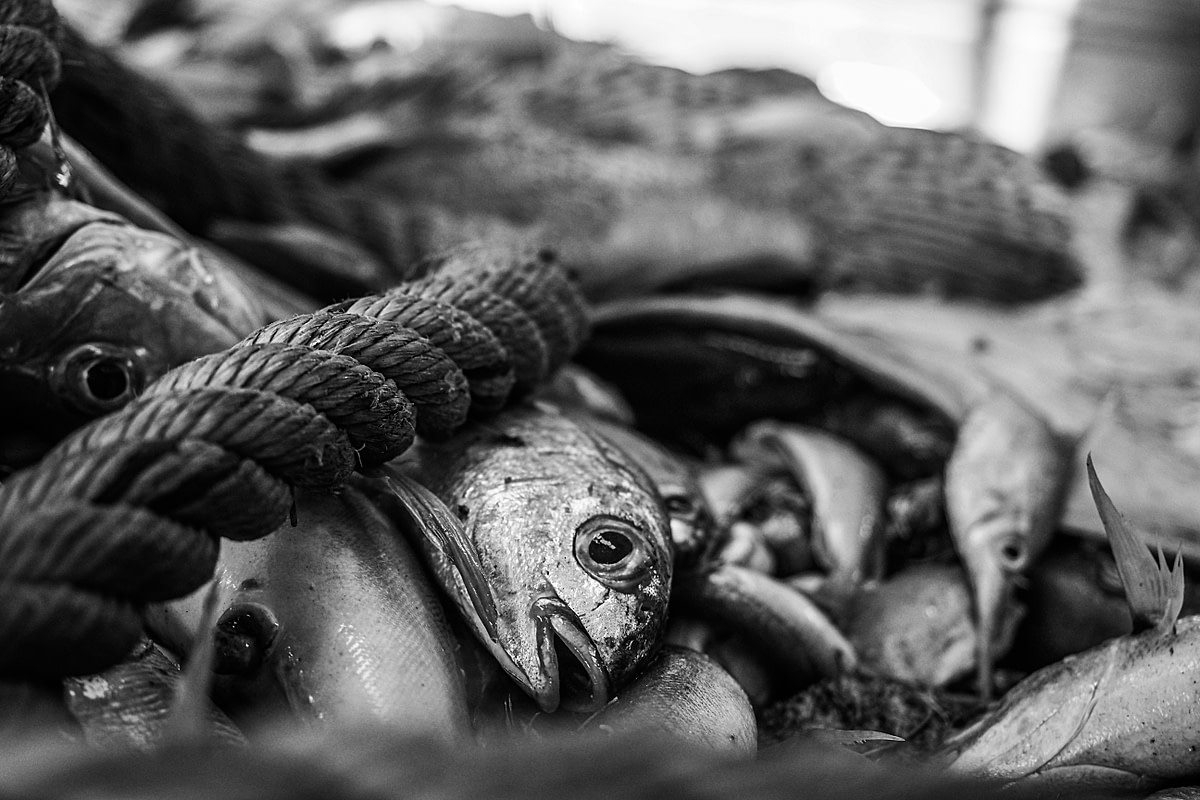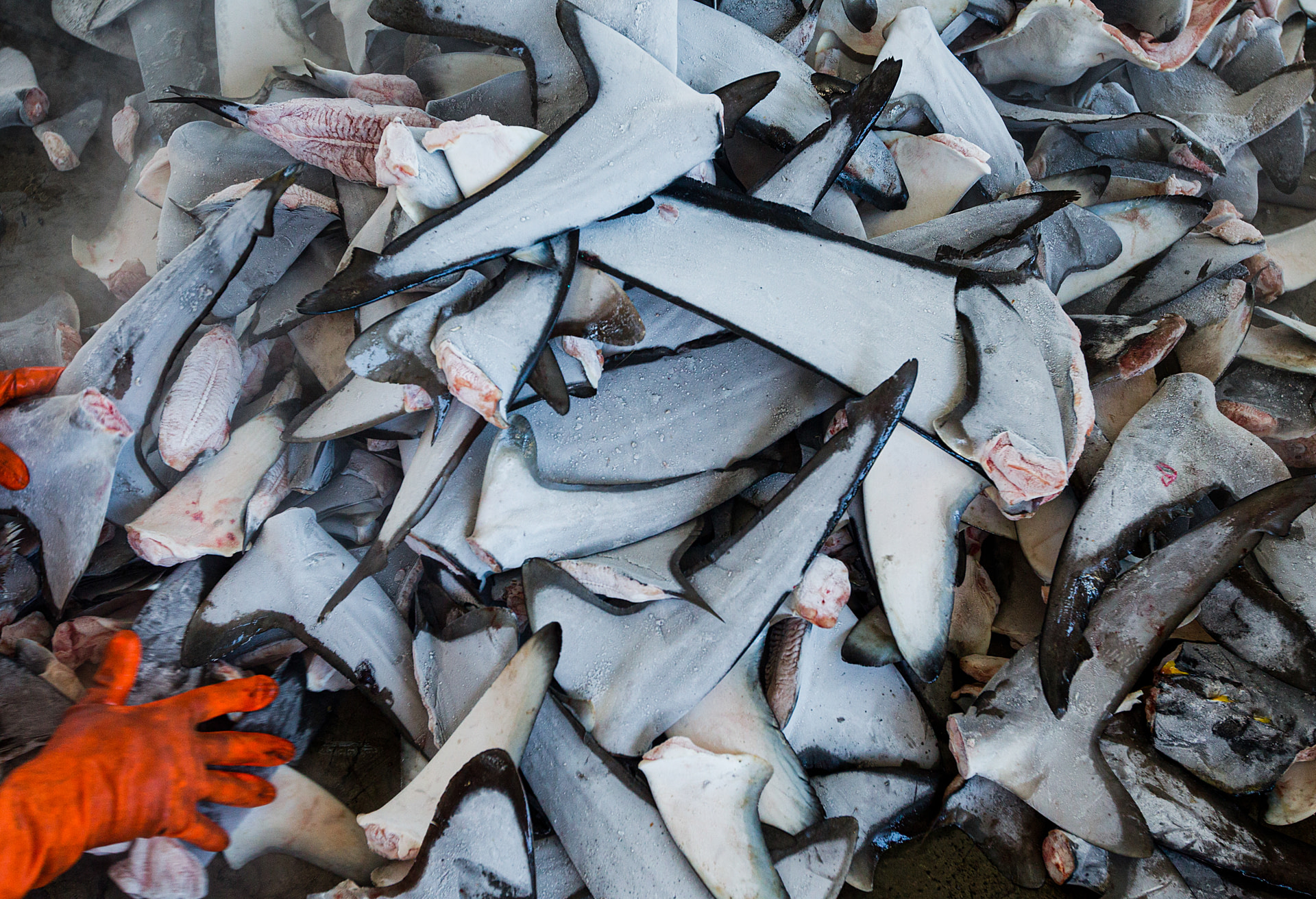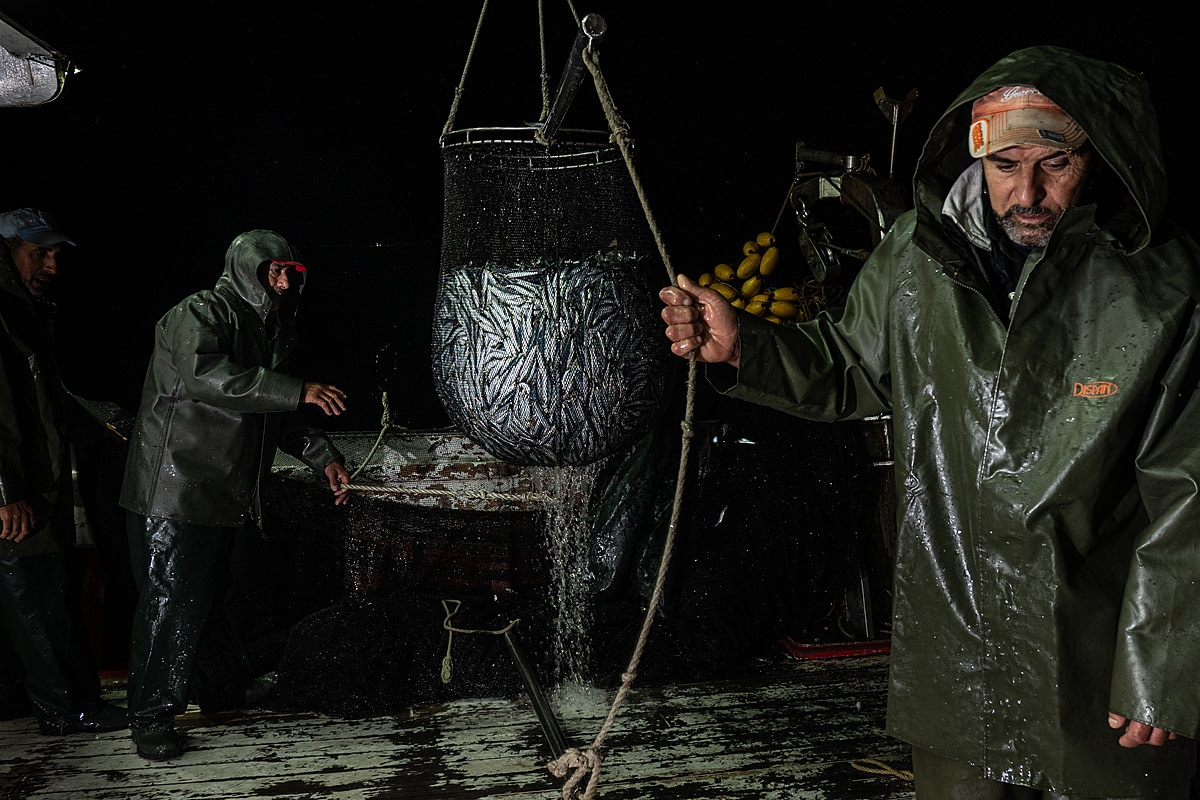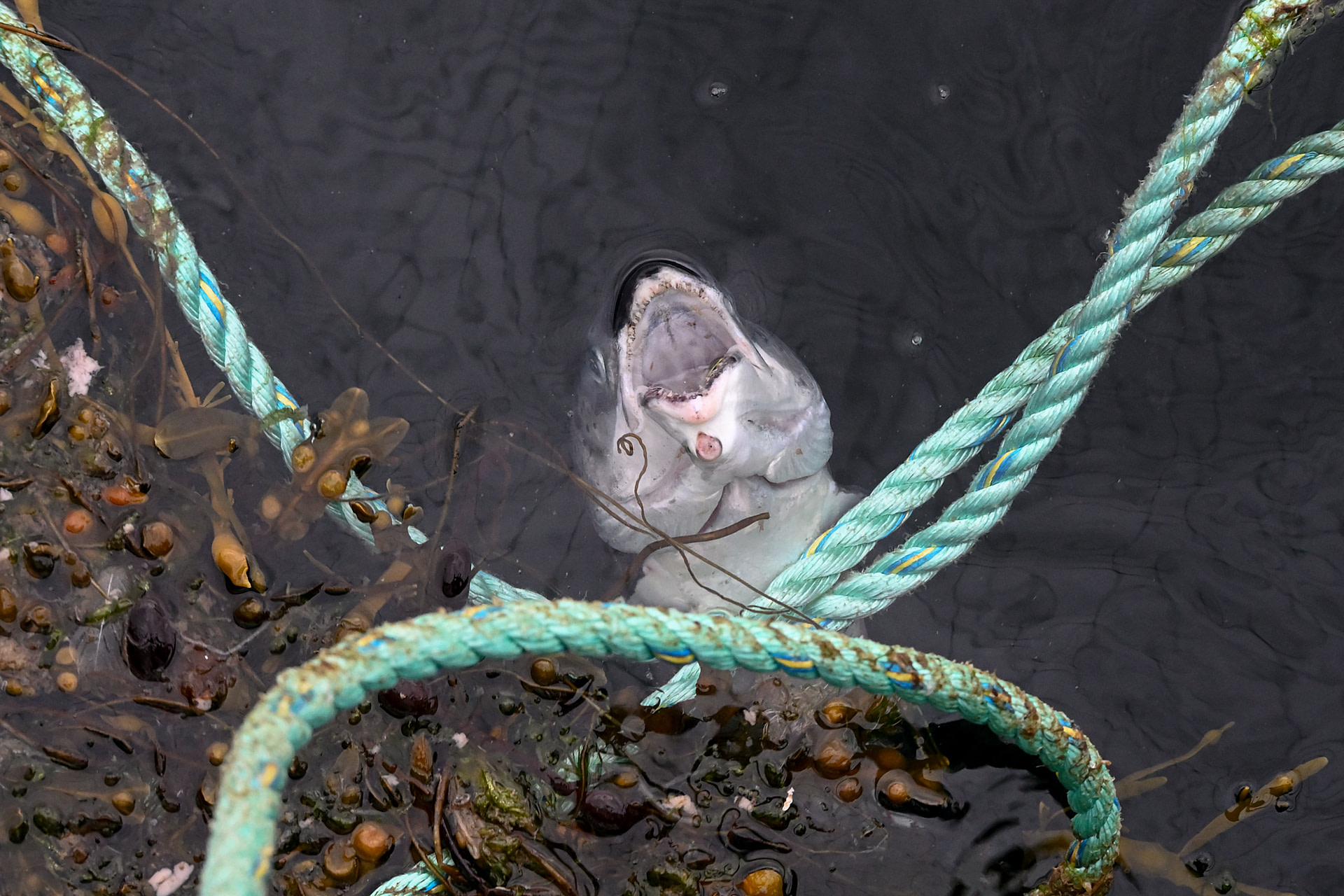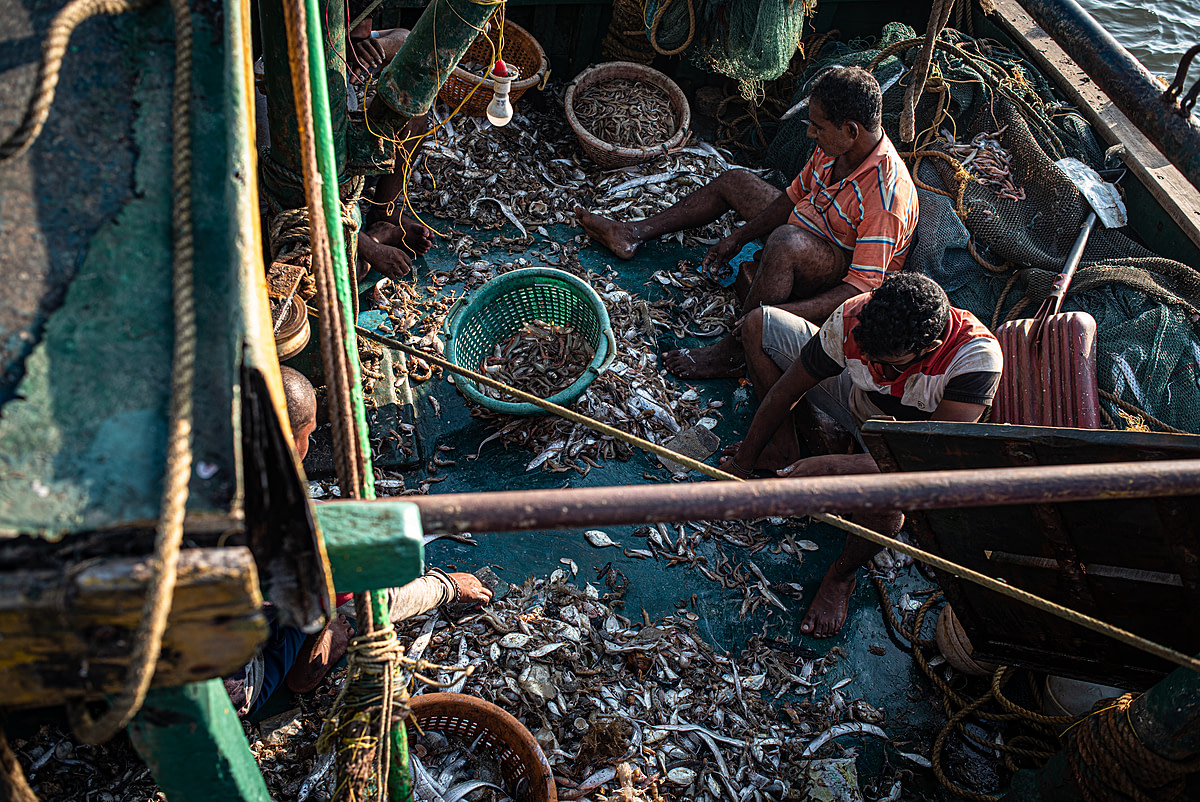Editor’s Note: This post was originally published on June 7, 2022 and has been updated for accuracy and to include new visuals.
June 8 is World Oceans Day, an annual United Nations (UN) event dedicated to celebrating the ocean and the vital systems that it supports. The 2024 theme ‘Awaken New Depths’ encourages us to explore new depths of understanding, compassion, collaboration and commitment. This World Oceans Day we’re telling the stories of marine animals.
Our appetite places an enormous burden on fish and other sea life, which in turn puts great strain on marine ecosystems. Marine animals are killed in much higher numbers than land animals; global estimates range from one to three trillion each year. Most species are only measured by weight, not by number of animals, so exact numbers are impossible to know.
We see fish in schools and not as individuals. These images show both industry and the individuals caught in our systems. We have been taught not to anthropomorphize, but this has prevented us from even acknowledging that their expressions and struggles, their dying and dead bodies, may actually be conveying something that we can understand: suffering. ― Jo-Anne McArthur, animal photojournalist and We Animals Founder
High-quality visuals are key to engaging people in conversations about these issues. Explore our collection of 4,450+ images and video clips to help you tell these important stories and advocate for change. Below is a selection of ten of these photographs, curated by the We Animals team for World Oceans Day 2024.
01
02
03
04
05
Bluefin tuna are caught in the Mediterranean Sea for the sushi market. Once hooked on board, they are stabbed and left to suffocate and bleed out. Italy, 2012.
Jonás Amadeo Lucas / HIDDEN / We Animals.
This photograph is one of the 204 images included in the book HIDDEN: Animals in the Anthropocene, published by We Animals.
06
07
08
09
Fishermen separate different kinds of small fish and crustaceans on a trawler. Once the main load of fish is removed from the boat, the fishermen go through the bycatch and recover catch that they can use. This will be mostly for their personal consumption or to be sold in their neighbourhoods. India, 2022.
Shatabdi Chakrabarti / We Animals
10
A worker onboard the fishing vessel Fasilis shovels fish (bycatch) back into the sea after they suffocated on the deck during the sorting process. Onboard this trawler fishing vessel, nets are emptied on the deck where the fish are left to slowly suffocate. The trawling method is highly unspecific so the amount of bycatch is high—several tonnes of undesirable dead fish are dropped back into the sea. Greece, 2020.
Selene Magnolia / We Animals
Though we may find it difficult to relate to aquatic animals, studies show they experience pain and stress. Whether farmed or wild-caught, the trillions are made up of individuals who suffer slow and painful deaths.
One way to understand the suffering of fish is to compare it with our sense of drowning – except that fish asphyxiate in the air. When nets drag them too quickly to the surface, they, like us, suffer from “the bends”. This can make their blood vessels burst and their eyes pop. ― Jo-Anne McArthur
These photographs are just a selection from our Aquatic Life gallery, which features over 4,450 compelling visuals captured by our team of international photojournalists. As always, our visuals are available for free to anyone working to inspire compassion, conversation and a change in the tide.
Data sources: UN World Oceans Day / Fish Count / Psychology Today
This World Oceans Day, help educate about aquatic life sentience and suffering. View and download these images (and more) or search specific keywords to get the visuals you need.

